Why is green the color of poison?
Have you ever wondered why poison is so often associated with the color green? Take movies or video games, for example: even the vials containing poison would frequently be made of a green glass. Sure, there are poisonous plants and all, but look no further than the 18th century, when some toxic green pigments forever ruined the reputation of the color.
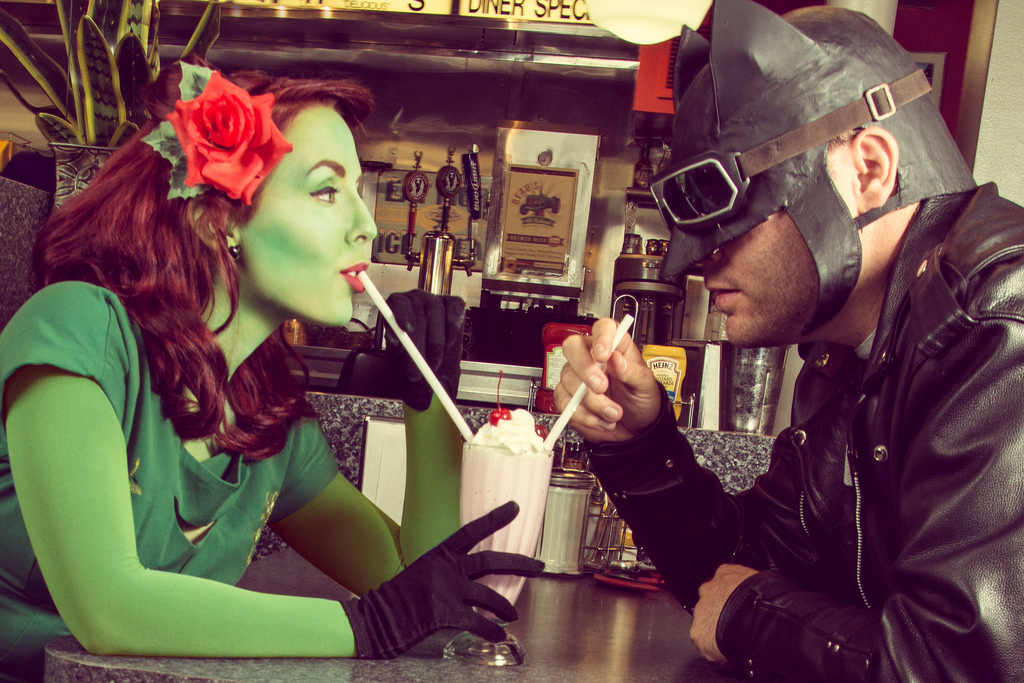
Photo by patimbeau / CC BY-NC-SA 2.0
##What were those pigments?
In the late 18th century, the Industrial Revolution was in full swing. It modernized cities, but also painted them dull gray. People craved colors as never before, and the vivacious green was in special demand. One day, a Swedish scientist Carl Wilhelm Scheele prepared a bright green compound by mixing sodium arsenite with copper sulfate and named it Scheele’s green. Together with Paris green, which is its stable acetoarsenite version, it quickly became immensely popular and widely used: green colored dresses, green decorated furniture, and green painted walls of the living rooms.
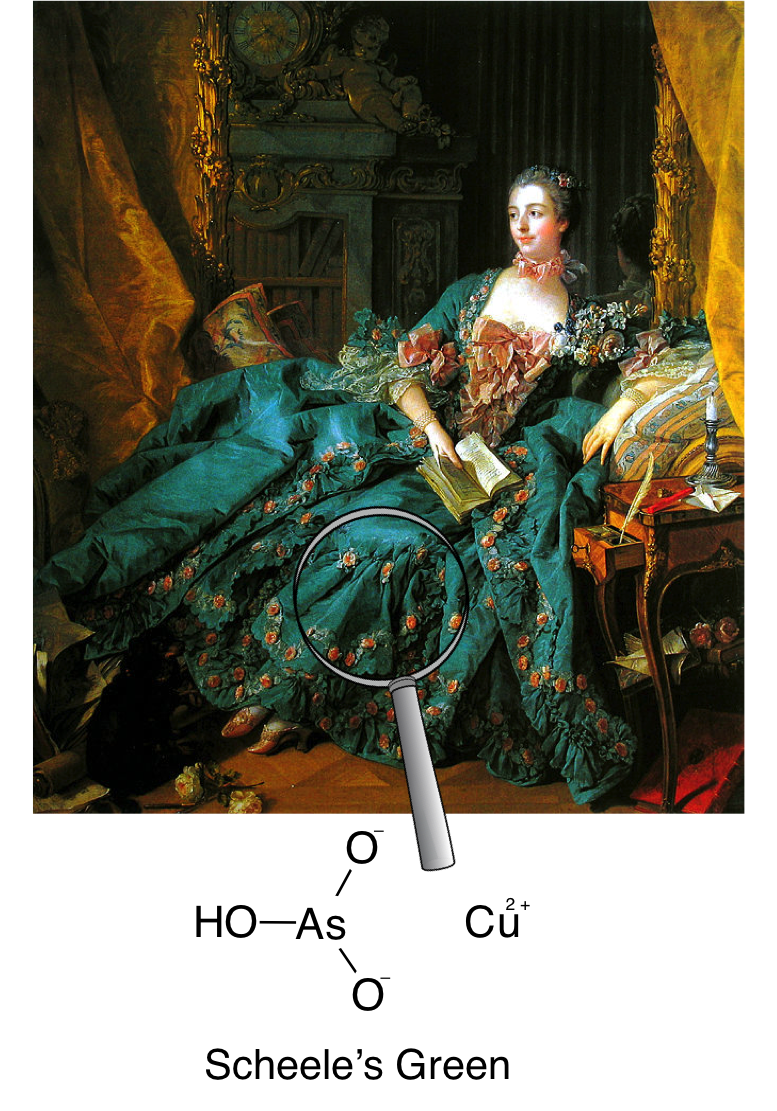
There was one drawback though, which the rats in the Parisian sewers had quickly learned. The beloved pigments of Cézanne and Monet, who excessively used them in paintings, Scheele’s and Paris green were so toxic that they were routinely used to kill the rats. So toxic, in fact, that Monet’s blindness, Cézanne’s diabetes, and even Napoleon’s death are still blamed on them.
##And why were they so toxic?
Today, scientists know that the cause of massive poisoning was not so much the pigments as the overall exposure of people to arsenic. A byproduct of mining copper and gold, arsenic was cheap to produce and abundant. Arsenic compounds were often prescribed to treat asthma and cancer, applied to a skin to improve its complexion, added to drinks to poison rivals or accidentally mixed into food.
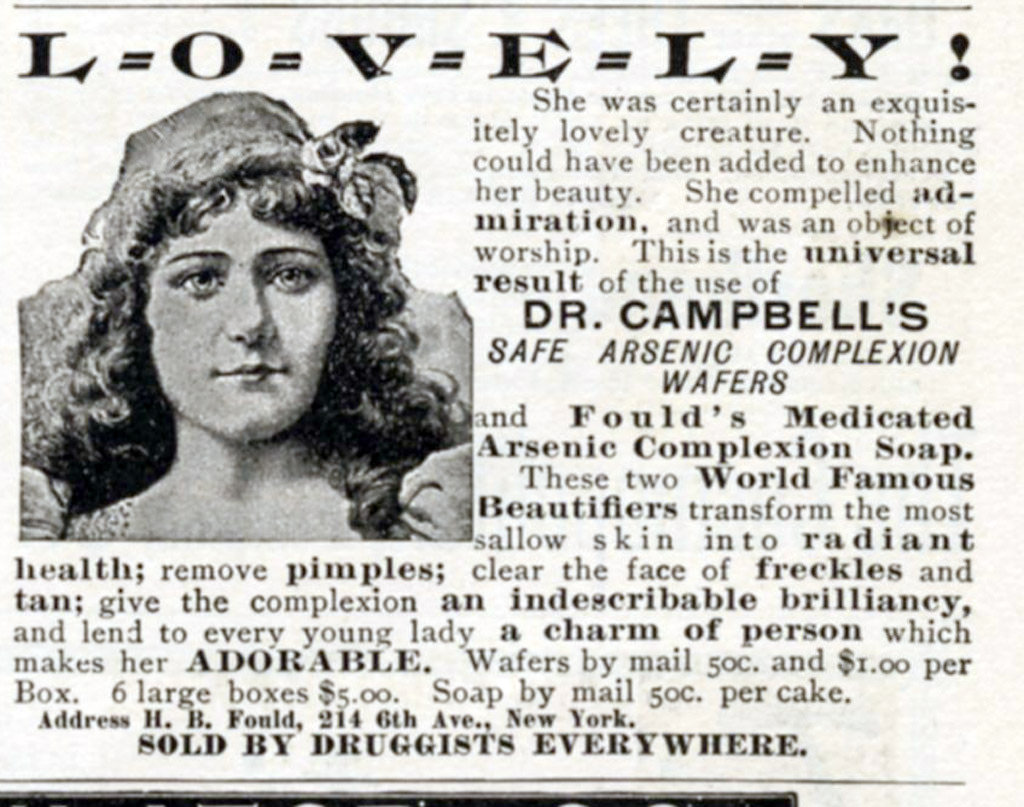
Photo by Nesster / CC BY 2.0
Once, a company “Humbug Willie” poisoned 200 people by selling them peppermints produced with arsenic trioxide. Not that it was intentional — a lousy pharmacy apprentice confused the substance for a sugar substitute and sold twelve pounds of it to the company.
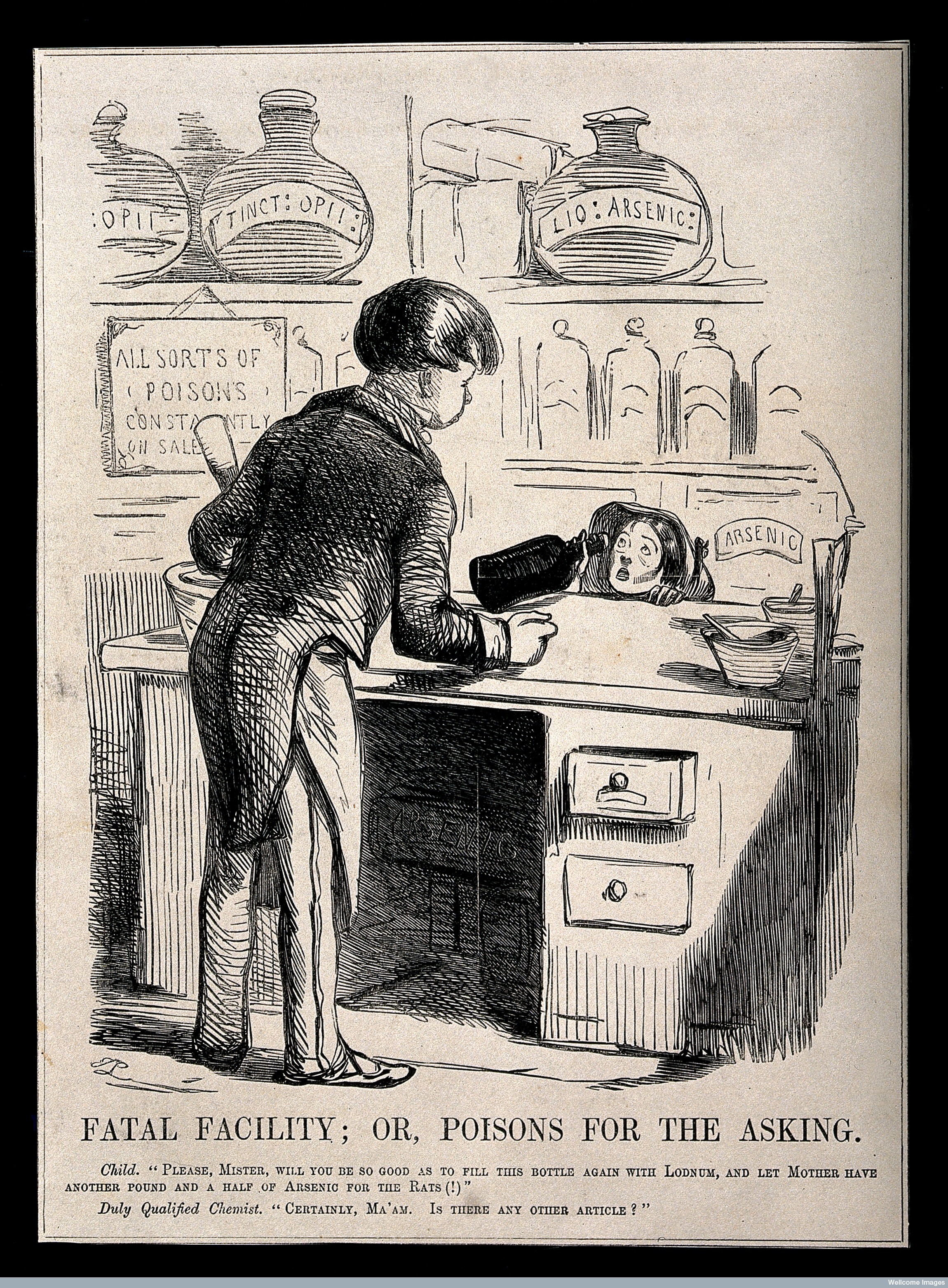
Photo by Wellcome Library / CC BY 4.0
Now, consider clothes, wallpaper, curtains, and candles — all dyed with Scheele’s and Paris green — and you have a recipe for an even more poisonous disaster. The pigments were often poorly applied and would easily flake off producing toxic dust. Ingested or absorbed by the skin, they are quickly metabolized. Arsenic binds to thiol (-SH) groups of enzymes, disrupts their functions and perturbs the machinery of life. Factor in trimethylarsine, (CH3)3As — a toxic gas produced by the mold in wallpaper that metabolizes the pigments – and you’ll understand why people were dying like flies.
 Reaction of arsenite with thiol groups
Reaction of arsenite with thiol groups
Indeed, it was an era when a woman could easily slay a menagerie of admirers while waltzing in her green dress, when the words “sweet poison” had literal meaning, and when the green walls could kill. No wonder poison is so often associated with the color green.
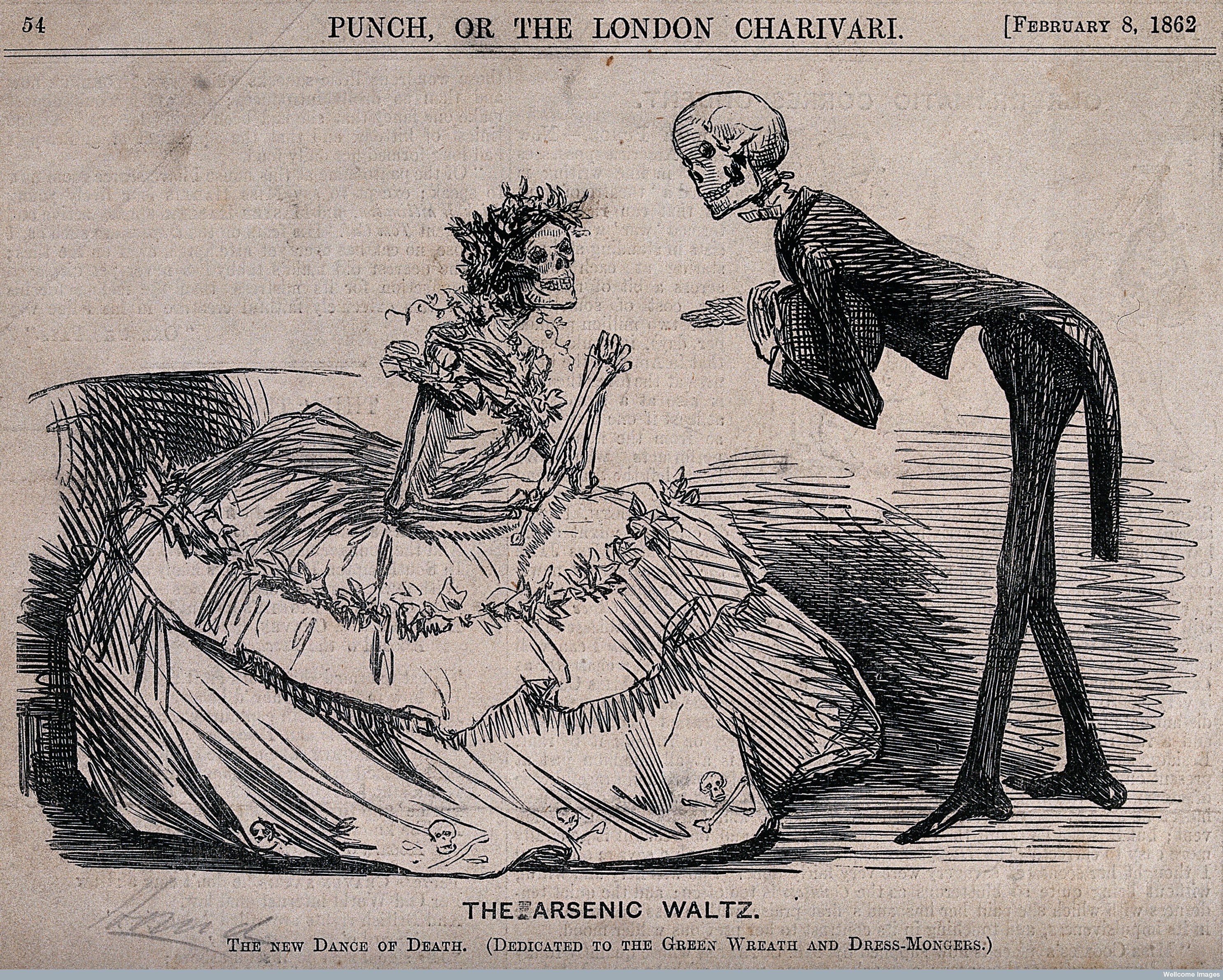
Photo by Wellcome Library / CC BY 4.0
See also
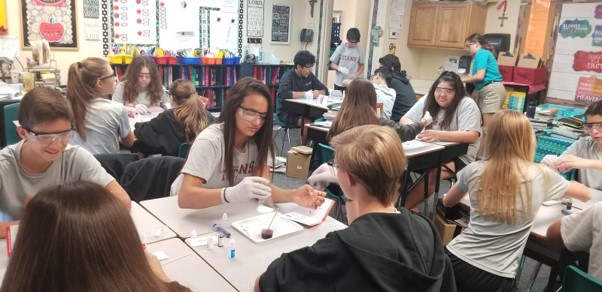
CASE STUDY - 8th Grade students at St Timothy's Catholic School use MEL Chemistry to enhance their science lessons
Saint Timothy Catholic School in Mesa is committed to promoting academic excellence in each child it looks after. They encourage self-discipline, self-respect, and respect for others. They understand the importance of engaging students in a comprehensive and relevant curriculum. As a result, the middle school science teacher from St. Timothy Catholic School is using MEL Chemistry subscriptions to enhance and expand their range of learning activities.
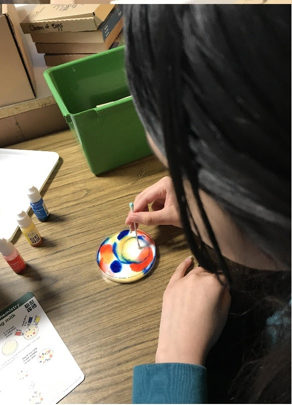
CASE STUDY - MEL Chemistry allowing pupils to reach their full potential
The Empower Learning Center is the Alternative Learning Program (ALP) within the Hinckley-Finlayson School District. They offer non-traditional education options for students ages 16-21 in their daytime program, night school for traditional high school students who need to make up credits, and night school for adults 18 and older who would like to complete their diploma or equivalency.
The school was seeking engaging, hands-on chemistry kits to make their science classes more interactive, and to help their students understand key science concepts and achieve their full potential in chemistry.

CASE STUDY - MEL Chemistry at Lund International School, Sweden
Emma Taylor, a science teacher at Lund International School (Sweden), has chosen MEL Chemistry sets as the best option for her students’ science classes. In Lund International School, all programmes are taught in English, and having chemistry sets in English are a great asset to accompany science classes.
Here, Emma shares her experience of how MEL Chemistry sets improved her students’ comprehension and understanding of science concepts.